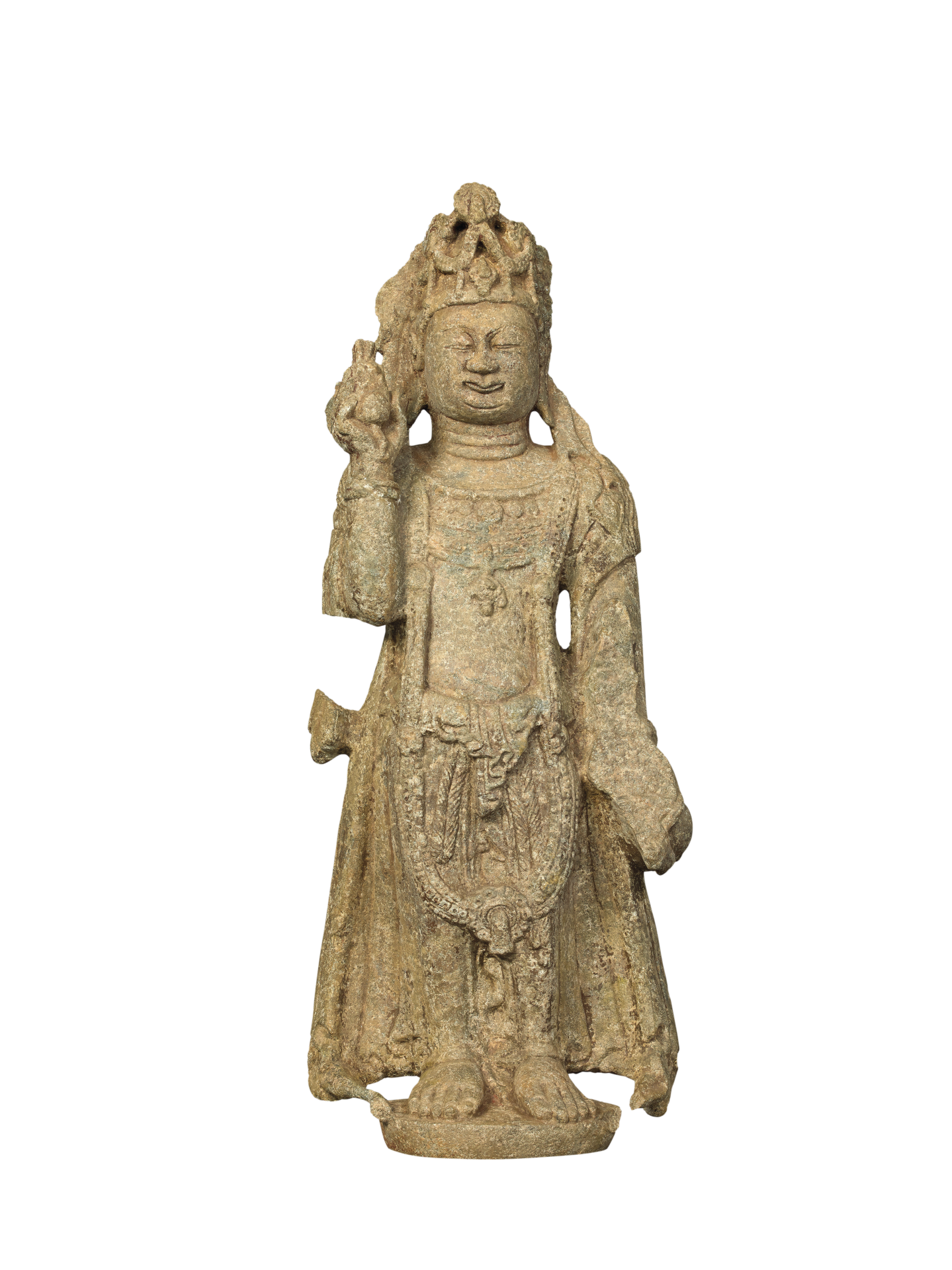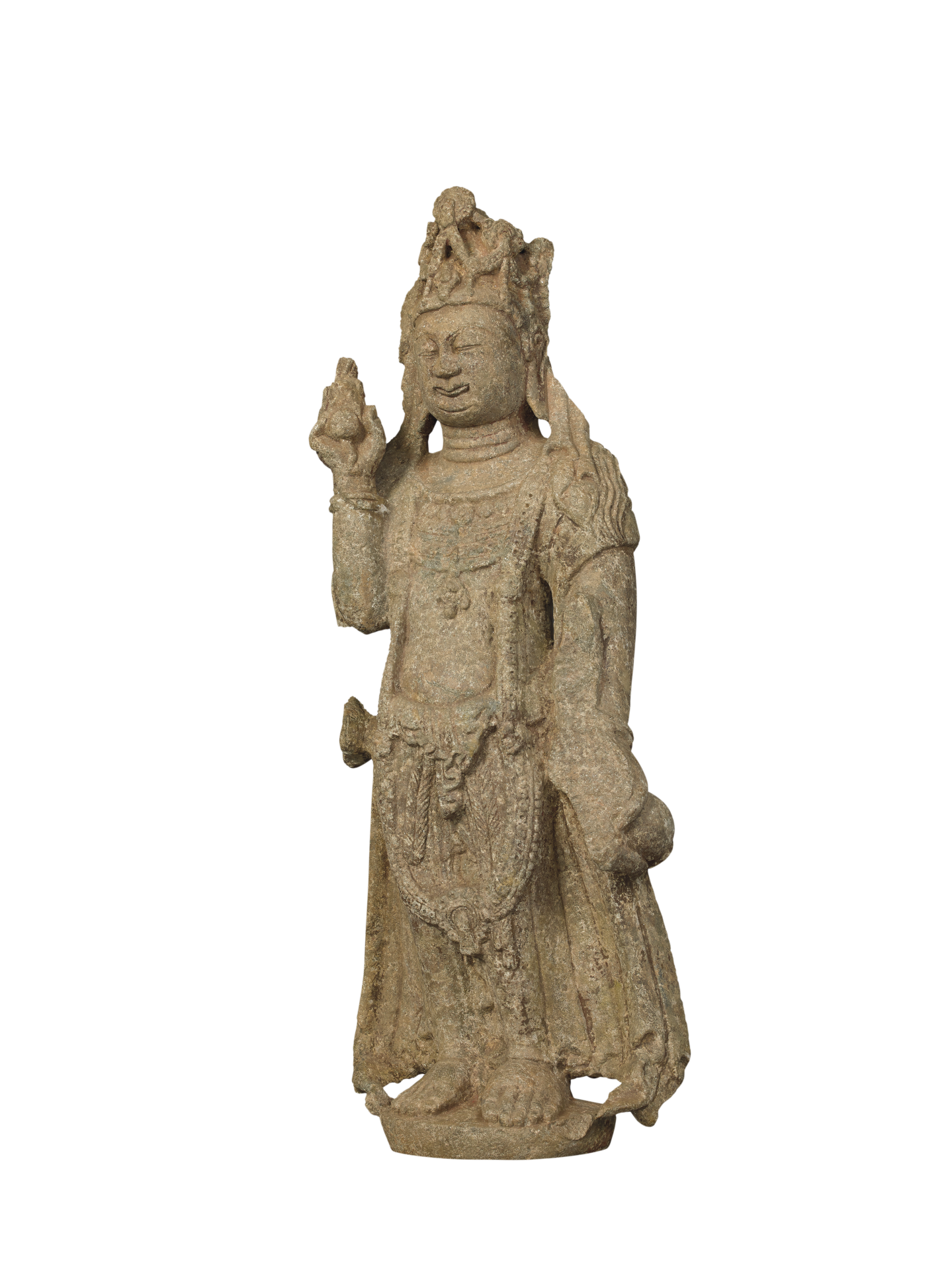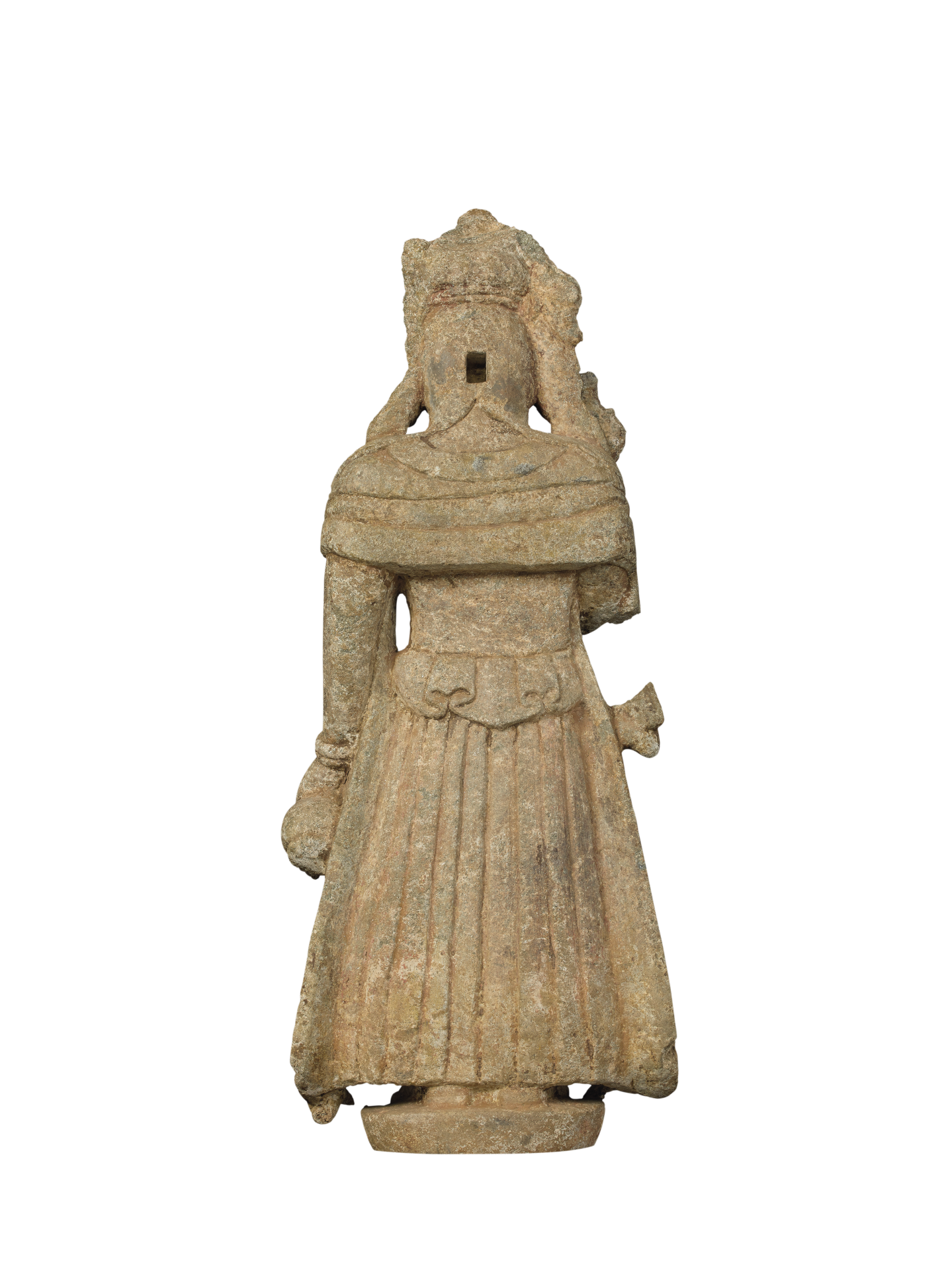Standing Guanyin Bodhisattva
Guanyin is the symbol of compassion and wisdom in Buddhism. Since the founding of this belief in India around the 2nd century CE, it rapidly spread to China and prospered there. At the end of the 3rd century CE, Dharmarakṣa (229-306 CE) translated the Saddharmapuṇḍarīkasūtra, commonly known as the Lotus Sutra, into Chinese. It is set out in Chapter 23 “Universal Gateway of Bodhisattva Guanyin”, that Guanyin delivers the universal gateway of salvation by manifesting in different forms in accordance with the individual needs of sentient beings and liberating them from mortal sufferings. The worship of Guanyin thus began to take roots in China.
Due to political chaos and frequent warfare in the Northern and Southern Dynasties (420-589 CE), people drifted about with their life and livelihood at stake. Many of them lodged their hopes in the divine power of Guanyin to relief their boundless mortal sufferings and calamities, thus resulting in the prevalence of the worship of this deity. At that time, not only were efficacy accounts of Guanyin compiled into books, large numbers of Guanyin statues were also carved or cast.
This Guanyin statue seems to be holding a lotus bud in the right hand. The left hand is damaged but the remnant of a purifying bottle is still discernible. The Bodhisattva has an oblong face with plump cheeks, a rounded chin, a smiley face, slightly monotonous facial features, a low nose bridge with rounded tip, and long straight narrow eyes. The square hole chiselled in the back of the head was once used for securing a mandorla. The upper body is bare except for the shawl, the multi-stranded broad necklace and a knee-length garland-like pendant strung with numerous small beads between floret spacers. The head-to-body ratio is one to five. The body is thickset and the arms stout. The upper body and lower body are roughly equal in length. The hair over the shoulders, the shawl around the upper arms and the folds of the dress behind the legs are finely and realistically represented. All these features are distinct characteristics of the period.


